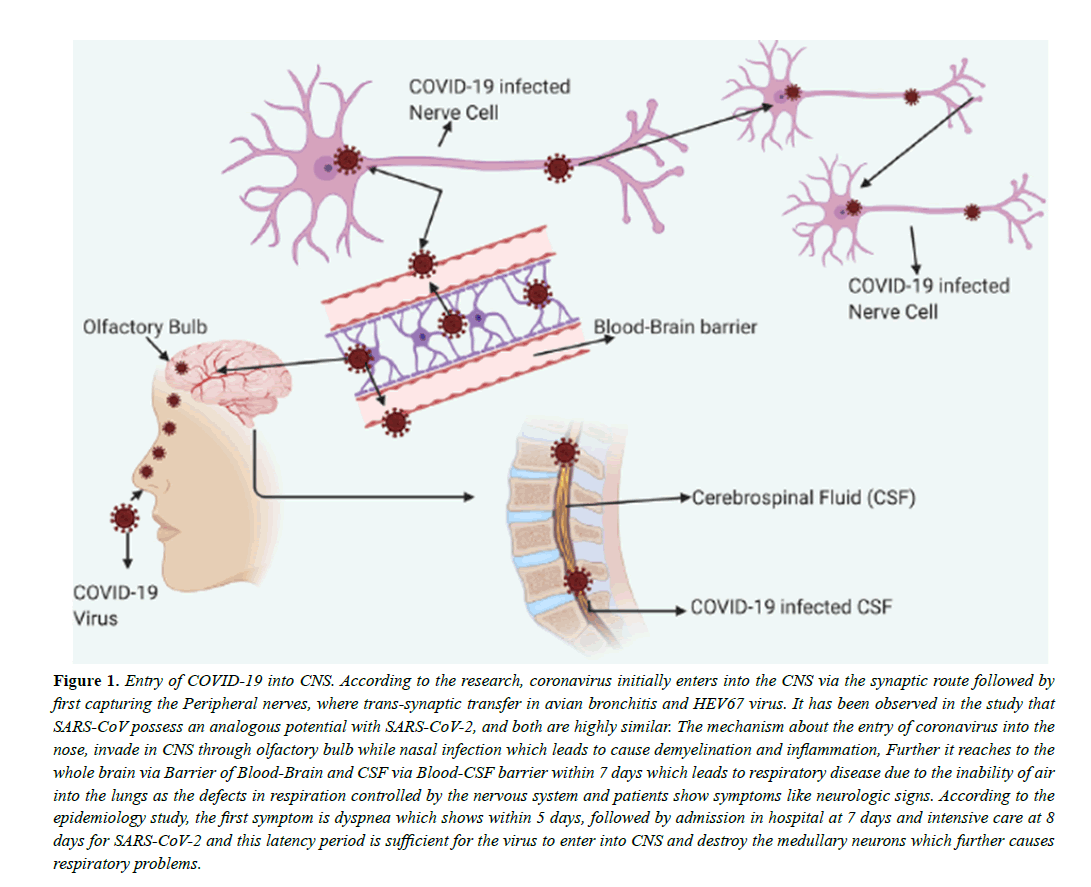Image Article - Annals of Cardiovascular and Thoracic Surgery (2020) Volume 3, Issue 3
COVID-19 entry into CNS.
Hazel Green*
Allied Academies, 40 Bloomsbury Way, Lower Ground Floor, London, United Kingdom
- *Corresponding Author:
- Hazel Green
Allied Academies
London, United Kingdom
E-mail: info@alliedacademies.org
Accepted: August 01, 2020
Abstract
According to the research, coronavirus initially enters into the CNS via the synaptic route followed by first capturing the Peripheral nerves, where trans-synaptic transfer in avian bronchitis and HEV67 virus. It has been observed in the study that SARS-CoV possess an analogous potential with SARS-CoV-2, and both are highly similar. The mechanism about the entry of coronavirus into the nose, invade in CNS through olfactory bulb while nasal infection which leads to cause demyelination and inflammation, Further it reaches to the whole brain via Barrier of Blood-Brain and CSF via Blood-CSF barrier within 7 days which leads to respiratory disease due to the inability of air into the lungs as the defects in respiration controlled by the nervous system and patients show symptoms like neurologic signs.Figure 1: Entry of COVID-19 into CNS. According to the research, coronavirus initially enters into the CNS via the synaptic route followed by first capturing the Peripheral nerves, where trans-synaptic transfer in avian bronchitis and HEV67 virus. It has been observed in the study that SARS-CoV possess an analogous potential with SARS-CoV-2, and both are highly similar. The mechanism about the entry of coronavirus into the nose, invade in CNS through olfactory bulb while nasal infection which leads to cause demyelination and inflammation, Further it reaches to the whole brain via Barrier of Blood-Brain and CSF via Blood-CSF barrier within 7 days which leads to respiratory disease due to the inability of air into the lungs as the defects in respiration controlled by the nervous system and patients show symptoms like neurologic signs. According to the epidemiology study, the first symptom is dyspnea which shows within 5 days, followed by admission in hospital at 7 days and intensive care at 8 days for SARS-CoV-2 and this latency period is sufficient for the virus to enter into CNS and destroy the medullary neurons which further causes respiratory problems.
